March 17, 2021
What Are Mushrooms + Post-Freeze Update
I’m astonished. Even though my mystery peach tree was budded out when Snowpocalypse 2021 hit, it’s blooming better than ever barely four weeks later.
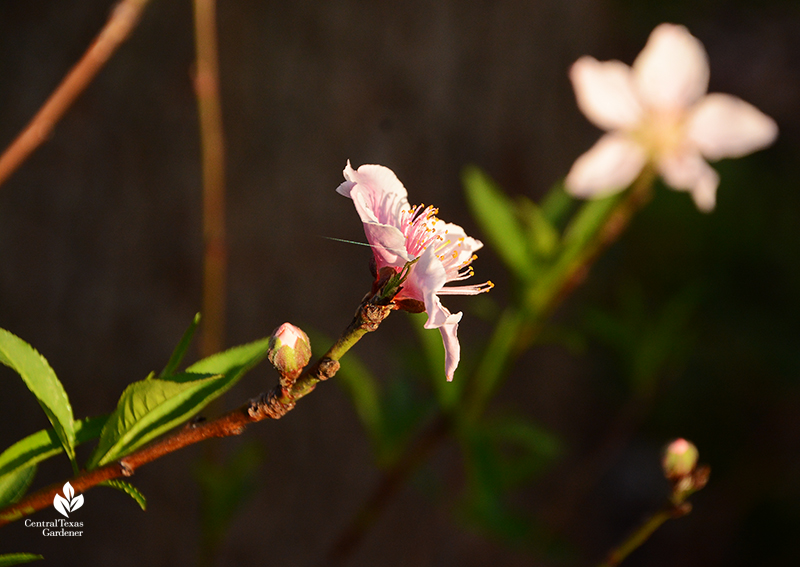
Whether we get peaches from this unknown variety probably “planted” by a raccoon is another thing. All that matters to me is that the bees are back!
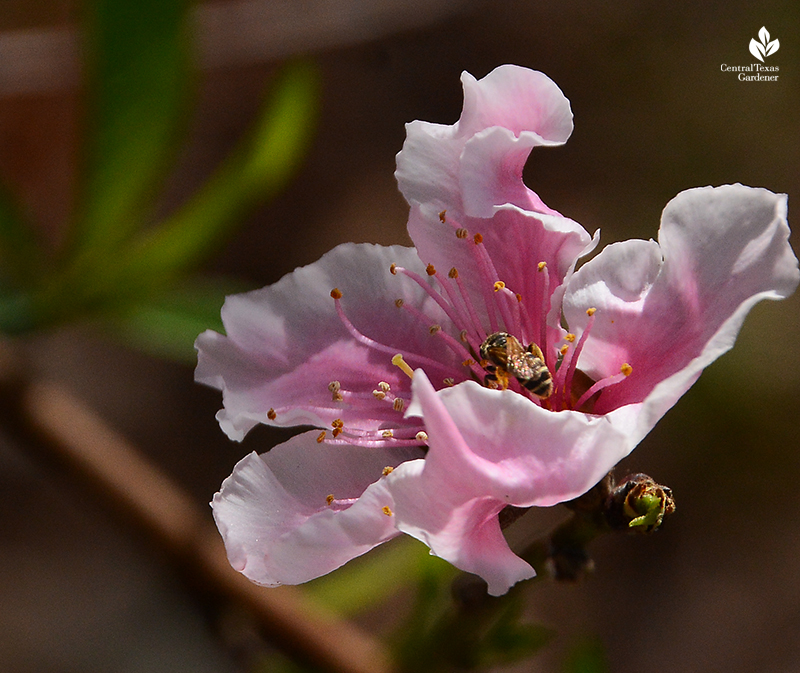
I wasn’t worried about my frilly pass-a-long bearded iris (Iris albicans).
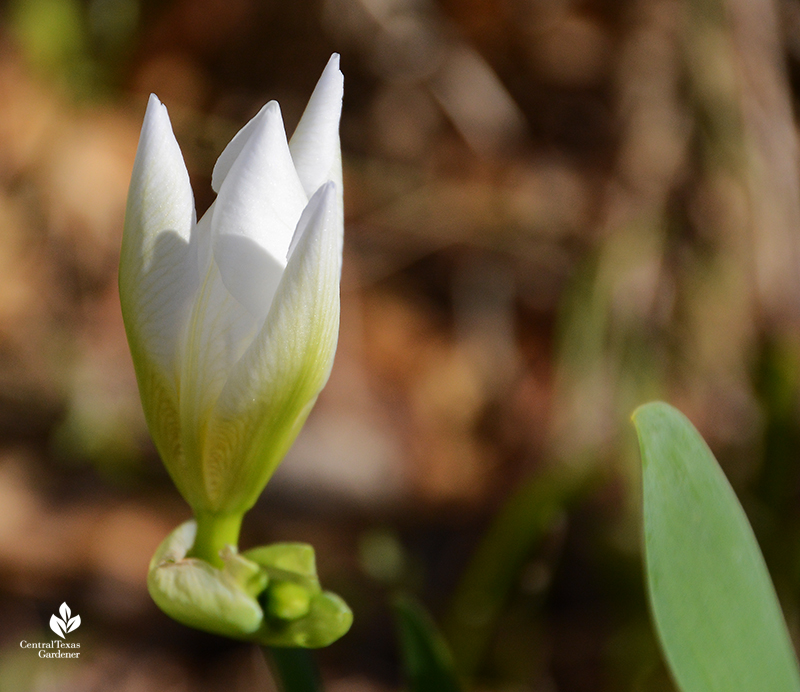
Known as the “cemetery iris” or “grandma’s flag,” it’s been passed around for generations across the country, surviving drought, floods, and (for us) landmark freezing.
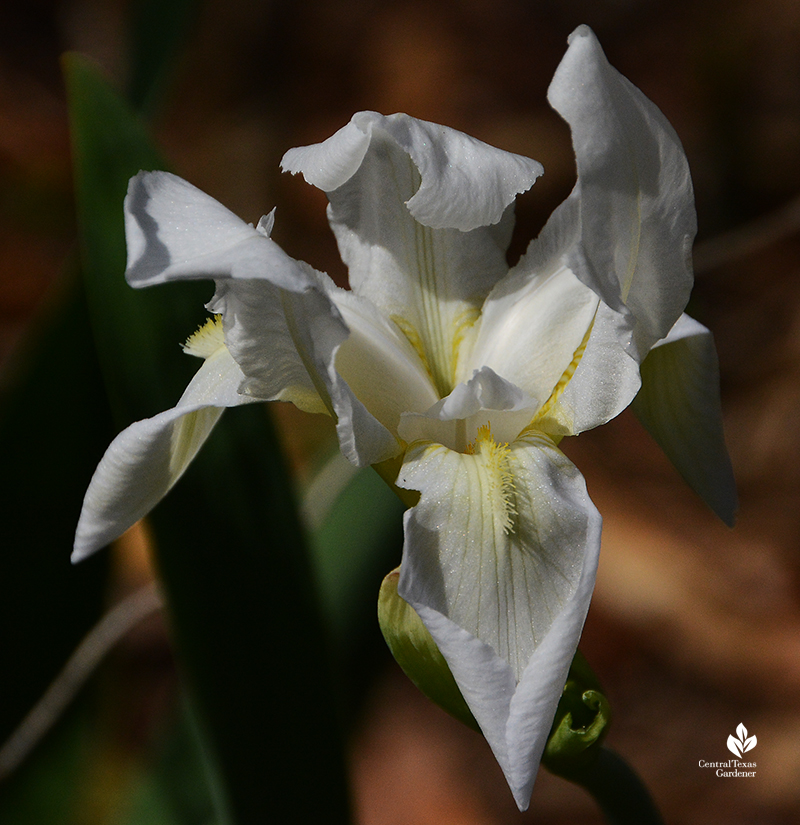
Right on schedule this week, a “field” of native groundcover golden groundsel (Packera obovata) turned the part shade island bed into a pollinator paradise.
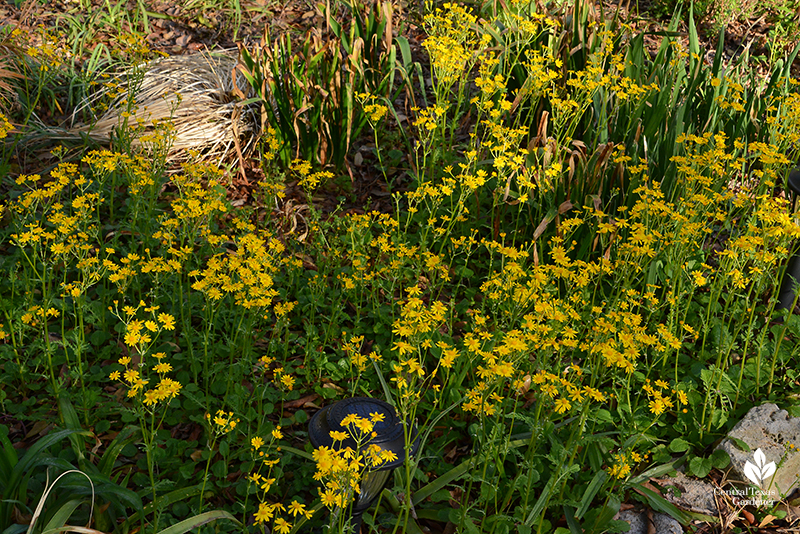
Native plants rebounded quickly, including fragrant mistflower (shrubby boneset), American and Mexican beautyberry, coneflower, frostweed, and skeleton-leaf goldeneye daisy. Fall-planted Carolina jessamine vine, muhly grasses and sedges didn’t miss a beat. Cedar elm and live oak trees have budded. Sadly, though, it looks like I bid farewell to a garden era: my beloved Agave celsii.
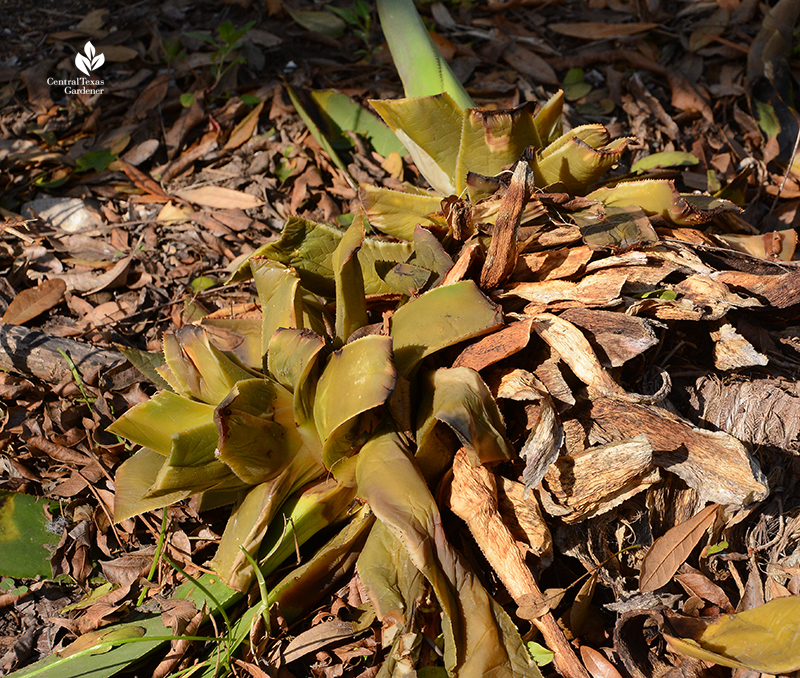
After a week of warm temps, I plucked the watery stems and leaves off with my hand. I’m leaving it for now, since a Texas spiny lizard is renting the crevice under woody old growth.
Now, my eyes are on the rain forecast in anticipation of mushrooms springing up! Some gardeners worry that there’s a problem when they pop up in beds, the lawn, or in containers. Actually, they’re a sign of good soil health.
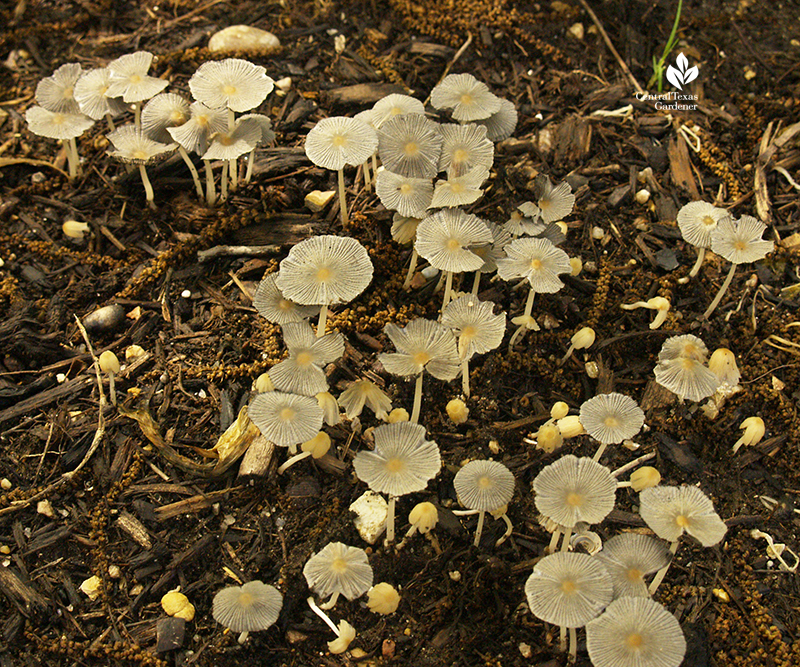
Mushrooms growing on trees, like these Ganodermas on a red oak, are indeed trouble signs. These conks will eventually decay the heartwood.
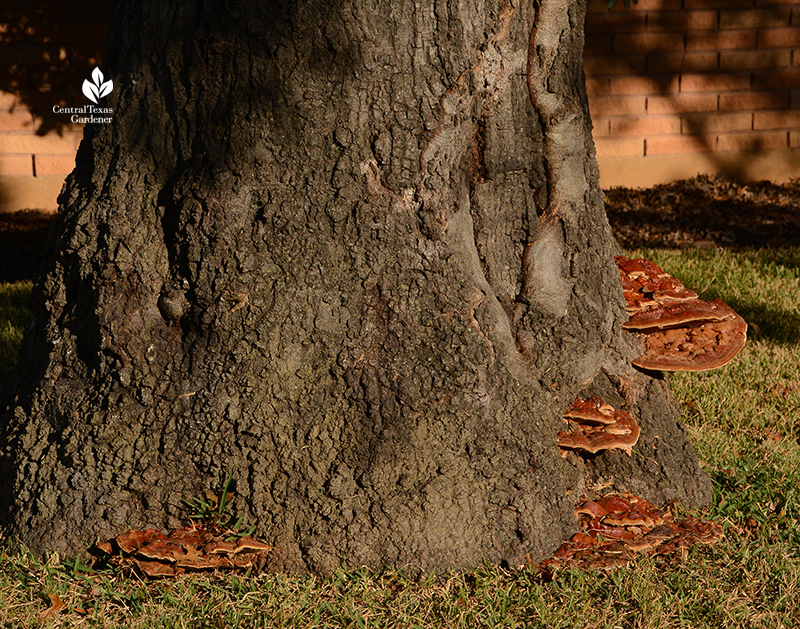
And, many of us are ordering mushroom kits to grow culinary mushrooms or joining mycology groups to learn how to forage wild ones safely.
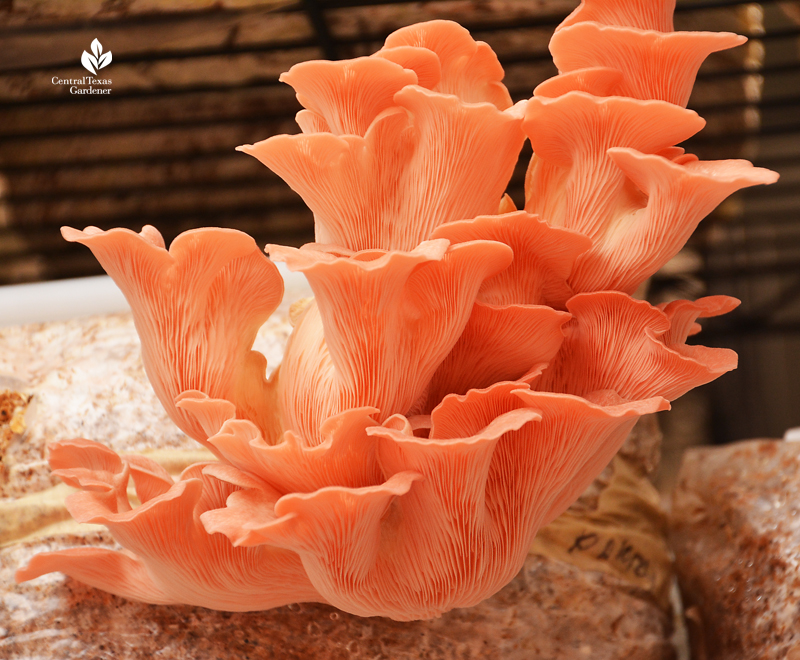
So, I hooked up with Angel Schatz, a leadership team member with the Central Texas Mycological Society and the Austin Organic Gardeners. In our Zoom conversation, she explains how mushrooms grow, what they do, and why they matter to our plants. Plus, she shows us how to get started on mushroom blocks.
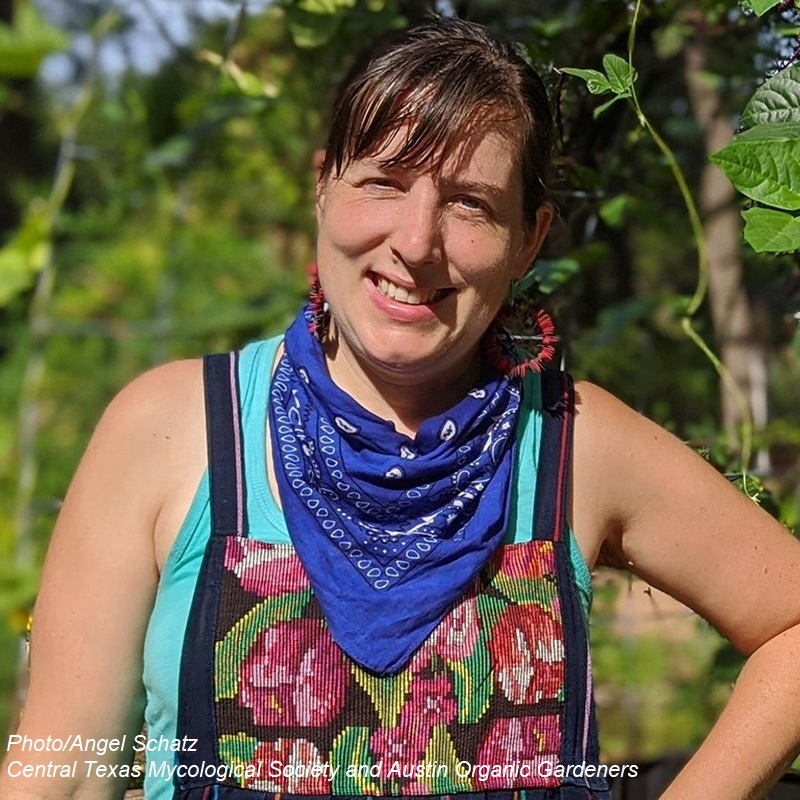
Angel got into mushrooms as a child when her granddad took her hunting for morel mushrooms on his Midwestern farm. Now living in Austin, she found her first Texas morels just as the pandemic shut everything down. “SXSW was canceled and in my new found free-time I wandered near creeks looking under juniper trees for the honeycombed, yellow mushrooms,” she said.
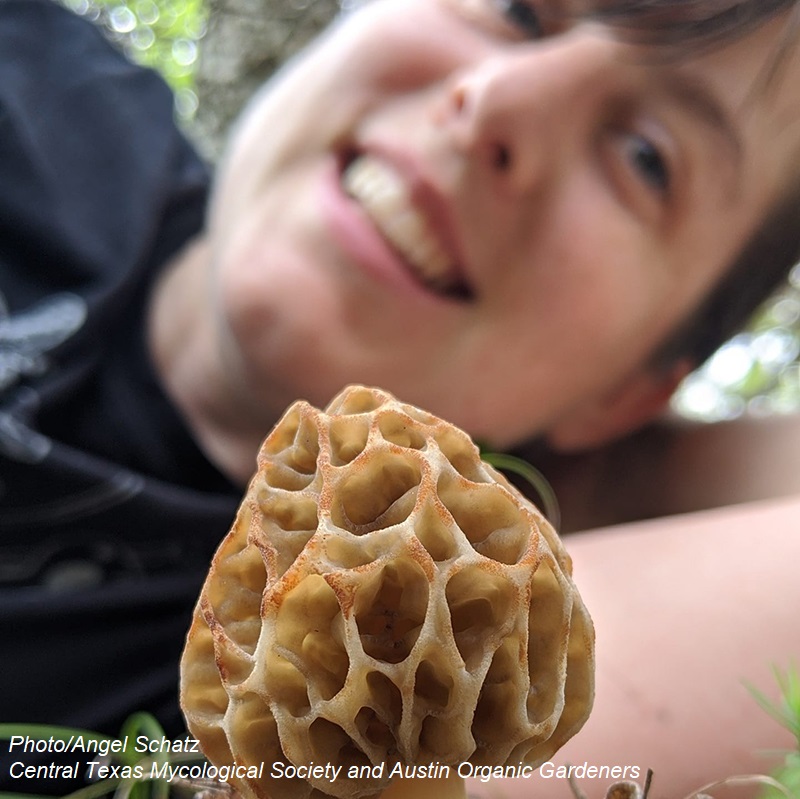
If you’ve ever noticed spidery web-like strands in your soil, mulch, or compost, that is mycelium, the vegetative part of a fungus. This network of fine white filaments called hyphae connects vast root systems of plants and trees, distributing nutrients and water. One cubic inch of soil can contain enough mycelium to stretch for eight miles, Angel told us.
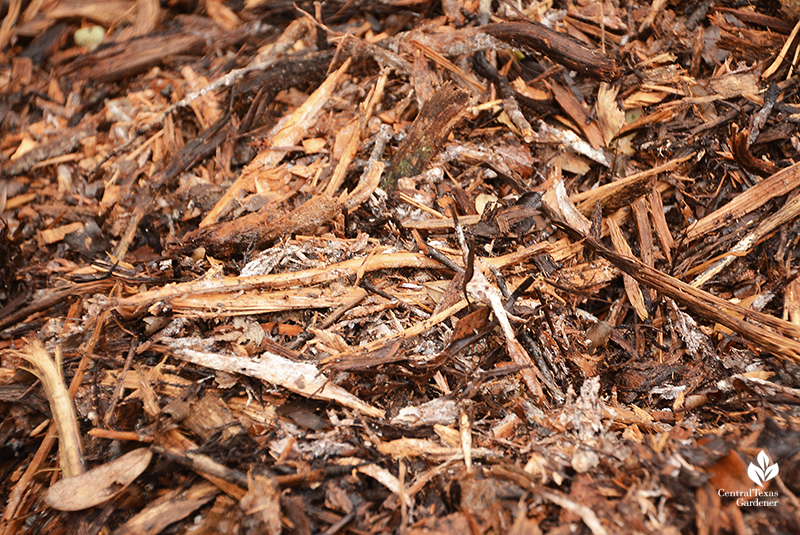
Mushrooms are the fruiting bodies or reproductive organs of mycelium. “Fungi is highly evolved, opportunistic, and waiting for the perfect conditions to create a mushroom. They appear many times after rain for a short period, release their spores, and then get consumed by the soil web or by humans if it is foraged. Once the spores (the equivalent of seeds) are dispersed, the cycle begins again. Spores are everywhere,” she said.
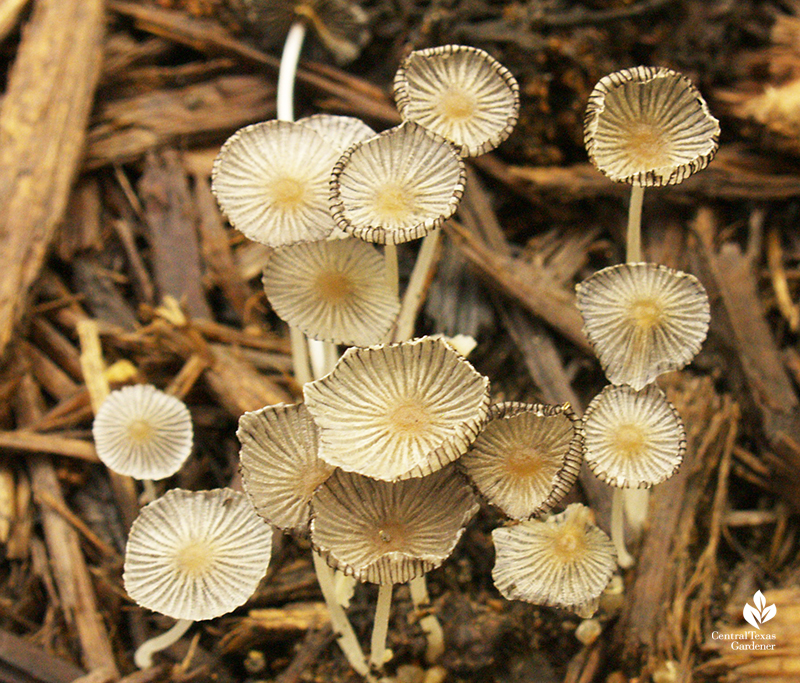
Angel breaks down the four categories of mushrooms.
Saprophytic Mushrooms: The Decomposers
They release acids and enzymes that break down dead tissue into smaller molecules they can absorb.
Decaying wood, plants, and even animals can become food for a saprotroph. This category includes Shiitake, Turkey Tail, Ink Caps, and Yellow Parasol (often seen in container plants). Edible oyster mushrooms are decomposers, too, like these golden oysters growing in Angel’s garden alongside cardoon.
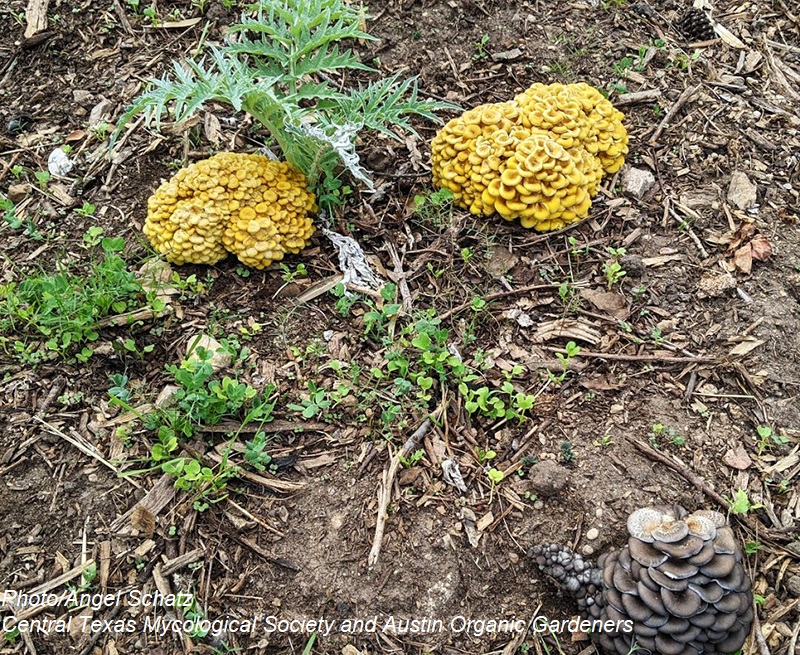
Reishi mushrooms, a species of Gandoderma fungus, are a common medicinal that can be grown on mushroom blocks (here in grow bags). It’s easy to find grow-your-own kits.
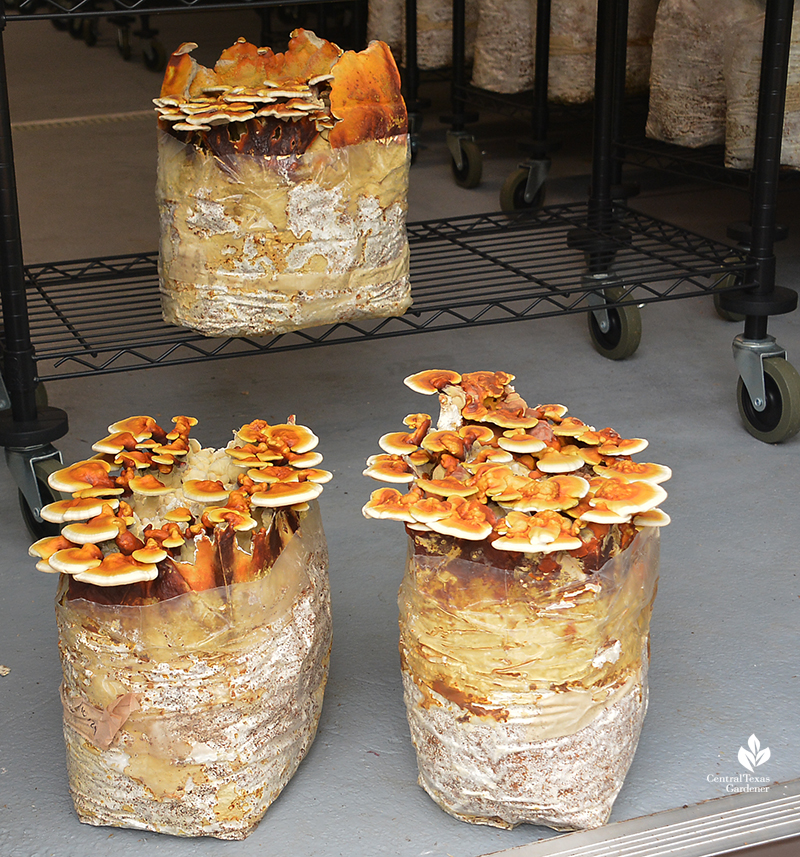
They also grow on pecan trees in Central Texas when the spores enter disturbed roots. Since fungal spores are everywhere, tree wounds or other damage are an open invitation for invasion. Once they form fruiting mushrooms that continue spreading spores, the tree is beyond help.
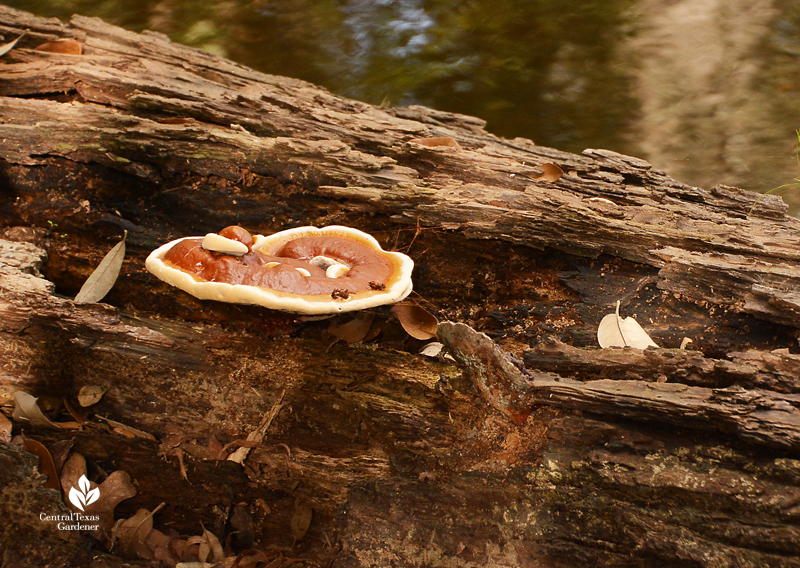
Chicken of the woods is a popular culinary mushroom that colonizes on Texas live oaks, slowly killing them, though it can take a while.
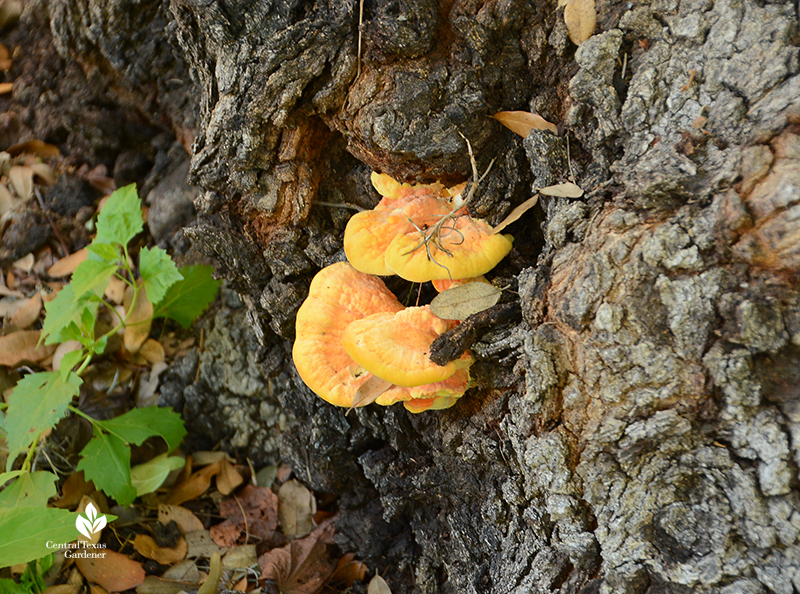
Parasitic Mushrooms: The Predators
Parasitic mushrooms prey on plants, trees, animals, and even humans. This type of fungus weakens trees and nourishes other organisms. Edible lion’s mane is one example that you can grow in mushroom blocks.
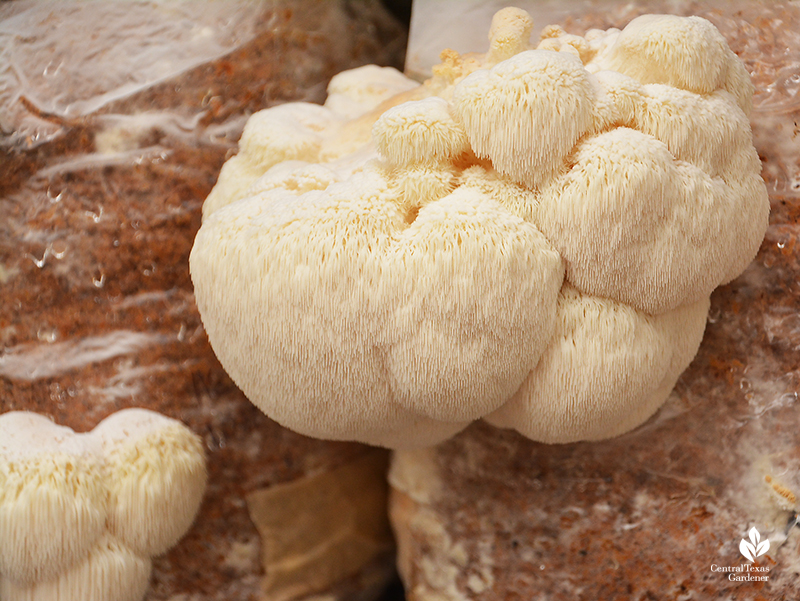
Mycorrhizal Mushrooms: “Related to Roots”
I bet you’ve seen mycorrhizal granular fungi and inoculants at the nursery or online! The mycelium brings in water, phosphorus, and other nutrients to the host plants through the roots for enhanced plant growth. Examples of these mushrooms: some morels, chanterelles, porcini, truffles, and matsutake.
Endophytic Mushrooms: Partner with Plants
“These mushrooms enhance plant growth and ability to absorb nutrients and deter predation from insects, other fungi and herbivores. Researchers have recently discovered that a fungal endophyte associated with pepper plants also creates capsaicin and now believe the reason why peppers taste spicy is because of this fungal relationship to deter predators,” Angel said.
How can we encourage them in our gardens? “The best thing you can do is not till your soil. If your soil needs aeration, plant sunflowers, thistles, root crops, things that have deep taproots. Or aerate using a pitchfork,” Angel said. And, if they show up in our garden, let them spread their spores and continue the process.
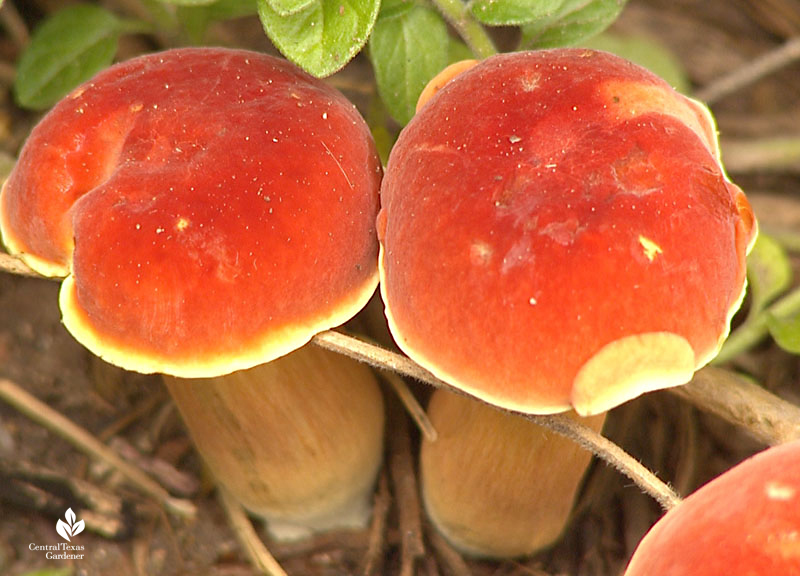
Speaking of sunflowers, the Lady Bird Johnson Wildflower Center has announced their first Wildflower of the Year: Sunflowers! We can sow seeds of the common annual sunflower in the next few weeks or buy perennial Maximilian sunflower transplants or seeds.
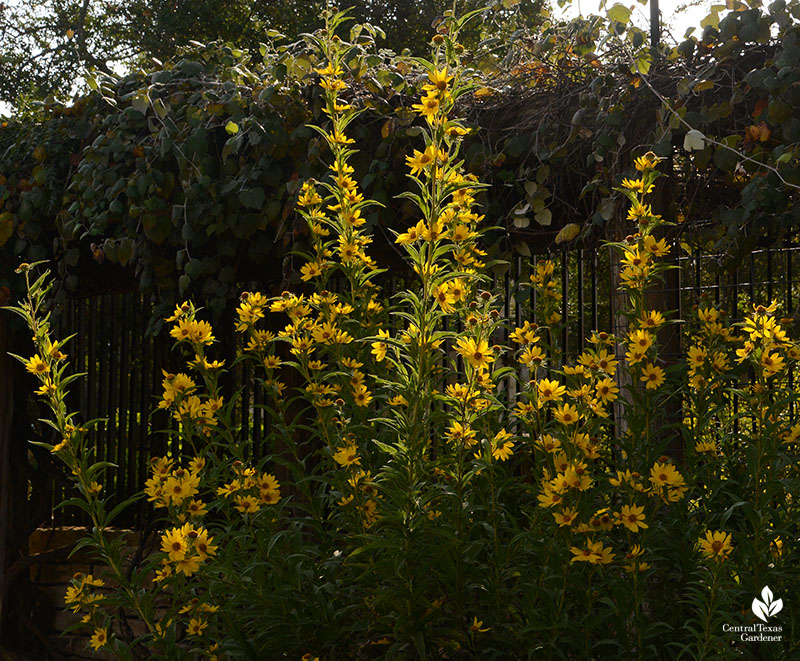
To introduce culinary mushrooms to your garden, you can buy kits and spawn/spore online. Recently, the Central Texas Mycological Society collaborated with local mushroom farms to get their used grow blocks out to gardeners. This spreads the spore love and keeps them out of the landfill!
To teach gardeners all about mushrooms, including how to grow them, they teamed up with the Austin Organic Gardeners to produce an online series, Mycology in the Garden (Angel as producer, camera and editor).
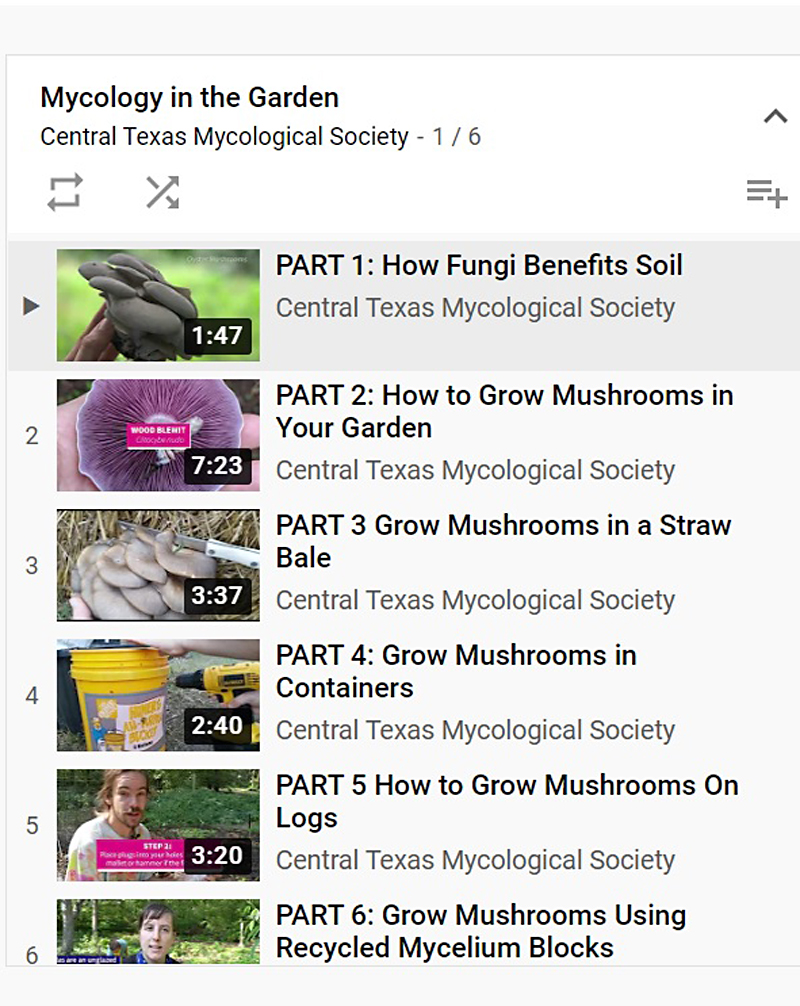
Watch on YouTube or on Central Texas Mycological Society’s site where you can also become a member to participate in events and participate in future mushroom forays.
Follow on Instagram
@austinorganicgardeners
@centraltexasmycology
@forage.atx (Angel’s account)
Watch
Fantastic Fungi: The Magic Beneath Us. Rent or buy this gorgeous and truly awesome documentary online if you missed it in the theater.
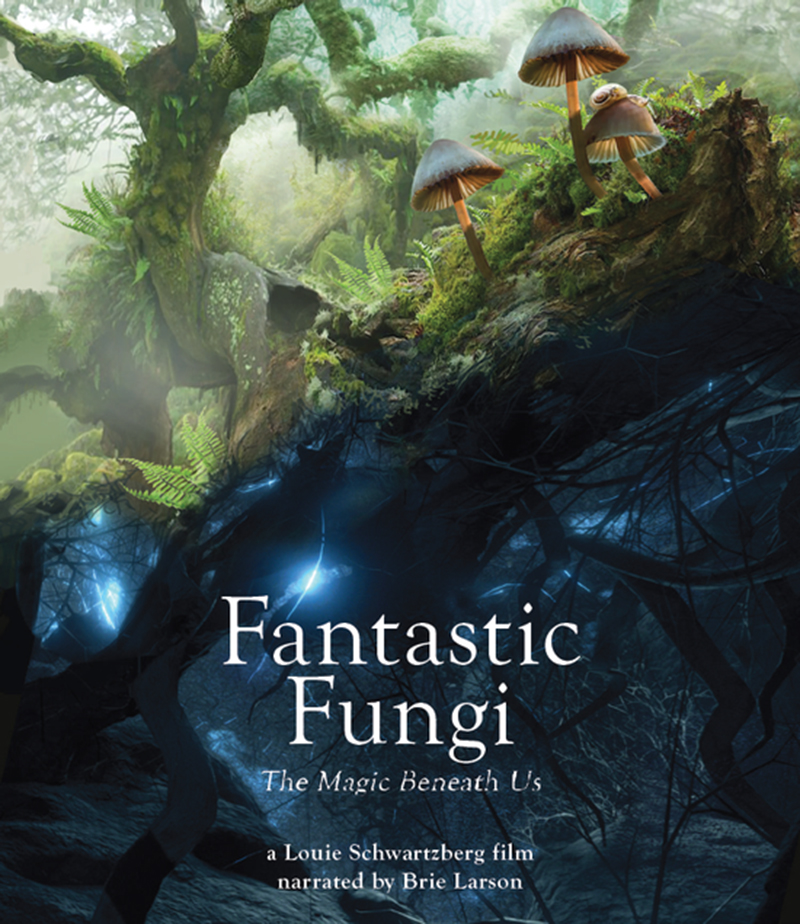
Read
Texas Mushrooms: A Field Guide by Susan Metzier and Van Metzier
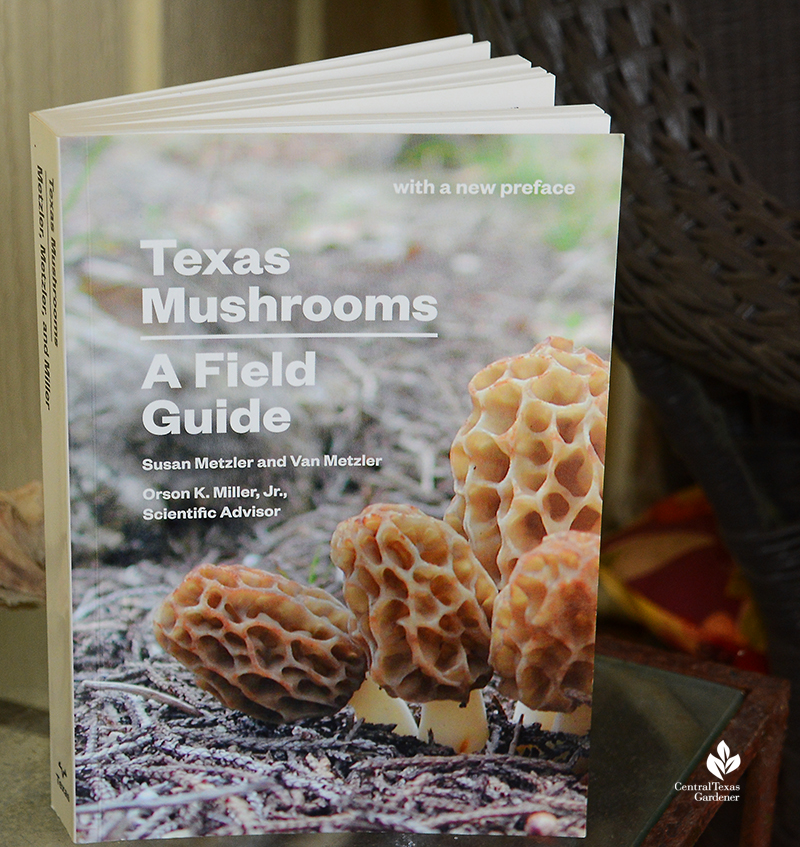
Online (one of many!)
Texas Mushrooms identifies mushrooms by location in Texas.
And watch Angel now, where she also explains how to grow mushrooms from recycled mushroom blocks!
Thanks for stopping by! Linda







